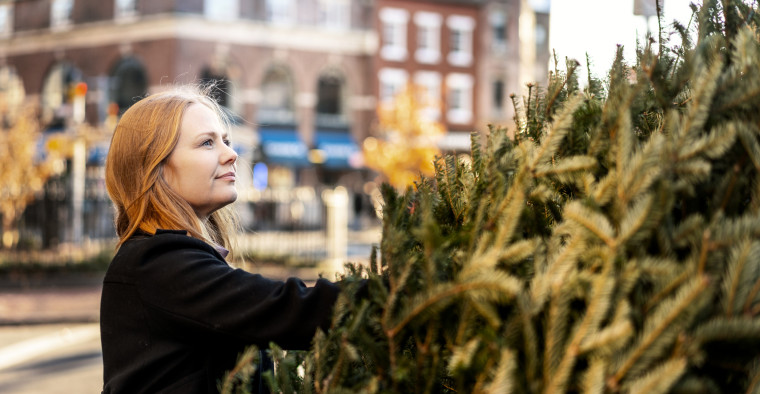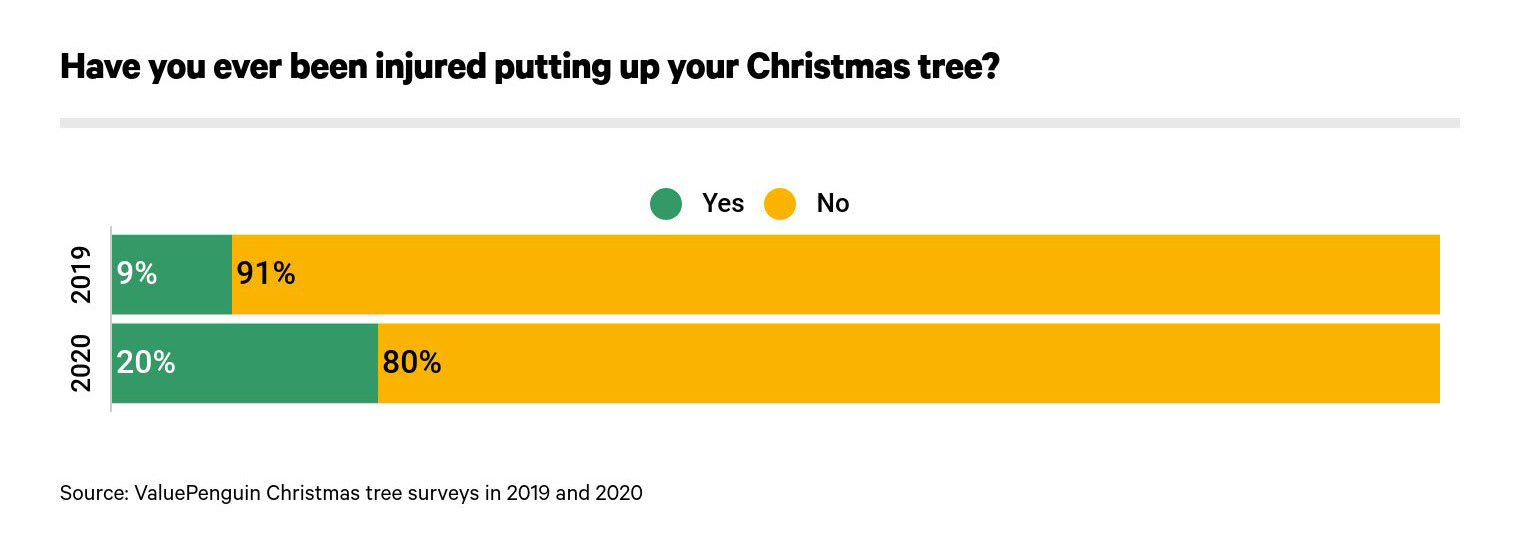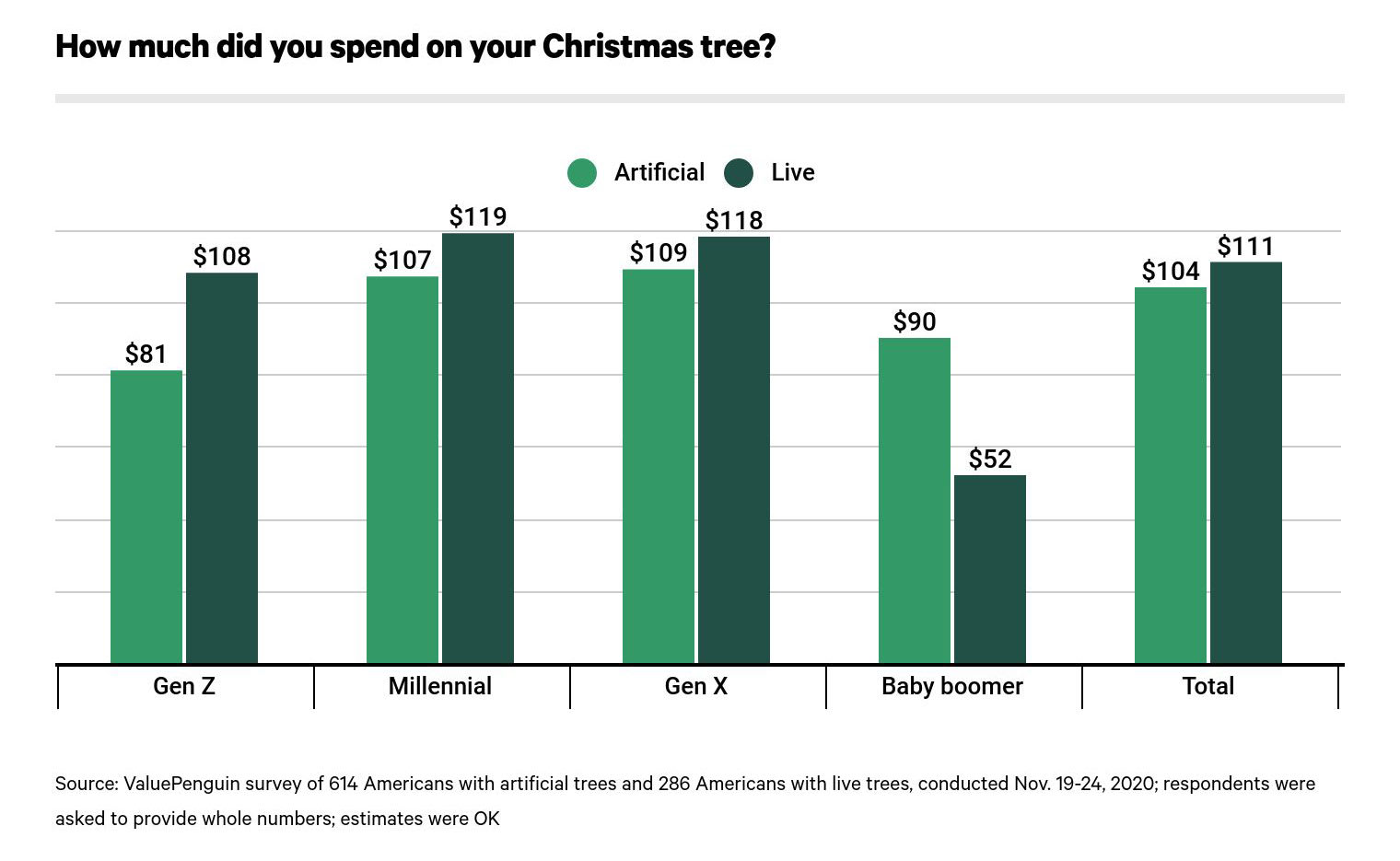Homeowners Insurance
1 in 5 Americans Have Been Hurt While Putting Up Christmas Tree, a 122% Rise From 2019 Report

Four in 5 Americans intend to have at least one Christmas tree in their homes, according to the latest ValuePenguin survey, which may not bode well for injury-prone celebrants.
The percentage of people who said they’ve suffered injuries from their Christmas trees more than doubled from last year’s survey. In 2019, just 9% of respondents said they'd gotten injured while putting up their trees, but that figure jumped to 20% this year — a 122% increase.
Despite the injury spike, those who prefer fake or real trees believe theirs are safer than the alternative — 24% of people prefer fake trees for their safety, compared with 8% of those who buy real trees. This cautious mindset is complicated because three-quarters have left their lights illuminated overnight, despite the risk of fire.
Key findings
- 1 in 5 Americans have been injured while putting up a Christmas tree. That figure is more than double compared to the 2019 ValuePenguin study.
- 75% of Americans admit they’ve left their Christmas tree lights on overnight. Of that group, nearly 4 in 10 have done so on multiple occasions.
- 46% of Americans say their family has argued about Christmas trees, most commonly over which type of tree to buy (19%), the size (17%) and where to put it (12%).
- 80% of Americans will have a Christmas tree inside their home this holiday season. The majority of people (63%) will put up an artificial tree, while 24% will get a real tree. Additionally, 10% will have multiple trees — both artificial and live.
The percentage of people who’ve been injured by their Christmas trees nearly doubled
This year, 20% of respondents said they've been injured while putting up a Christmas tree. A previous survey conducted by ValuePenguin found that 9% of people said they were injured by their trees.
Fewer women (11%) than men (29%) have been injured by their trees. And younger generations were far more likely to be injured while putting up their trees. In fact, 27% of Gen Zers and 24% of millennials said they’ve been hurt by their trees, compared to just 5% of baby boomers.

Christmas trees can be hazards, as they can cause fires and property damage under certain conditions.
Three-quarters of Americans admit to leaving t their Christmas tree lights on overnight. Of this group, 39% have done it more than once. Leaving Christmas lights on a tree is a fire hazard, and the chance for accidents grows with the age of the lights. To this end, 11% of people have lights that are at least 7 years old, while 7% couldn’t say how old their lights are.
While just 5% of Americans use Christmas lights that are 10 or more years old, 10% of baby boomers said they’re using lights that are at least a decade old.
A fire can also occur if trees are disposed improperly. Of the people using a real tree, 23% will burn them after the holidays. Generation Xers (29%) are the most likely to burn their trees after use and men (29%) are more than twice as likely as women (14%) to do so.
How people get rid of their trees after Christmas
Method | Percent |
|---|---|
| Set it outside for trash pickup | 31% |
| Burn it | 23% |
| Recycle it | 19% |
| Donate it | 13% |
| Bring it to a dumpster | 10% |
| Other | 5% |
Totals in table don't add to 100% due to rounding.
Fortunately, if someone is injured while putting up a Christmas tree or at another point during the holidays, they would likely be protected by their home insurance policy's personal liability coverage. This part of a homeowners insurance policy pays for the expenses of those whose injuries they might be held legally responsible for, such as those who are hurt at home.
Artificial trees can be a better investment, but that's not why far more people prefer them to real trees
It's not common for a household to put up both fake and genuine trees during Christmastime — just 10% will have both kinds this year. Instead, 63% who put up Christmas trees will use a fake, and only 24% will display a real one.
Generation Zers (19%) are nearly twice as likely as other generations to display more than one tree. The next closest was millennials (10%).
Younger people are more likely to put up a real tree than their older counterparts. In fact, 28% of millennials and 27% of Gen Zers will put up a real Christmas tree this year, compared with 24% of Gen Xers and 12% of baby boomers.
Other than baby boomers, each demographic cited the enjoyable experience of selecting a real tree as the top reason why they're opposed to artificial models. The majority of baby boomers cited that it’s a tradition.
46% of people have had arguments with their family about their Christmas trees, with the most common arguments stemming from the type of tree (19%), followed by the size (17%) and where to put it (12%).

The older the demographic, the more likely used fake trees. In fact, 53% of Gen Zers plan to set up fake trees, compared to 78% of baby boomers.
Artificial Christmas trees are generally cheaper than real trees and — because they're reusable — can be the better long-term investment. On average, people with fake trees spent or planned to spend $104, while real tree buyers spent or plan to spend $111 on average — or 7% more.
More than 6 in 10 (62%) people using artificial Christmas trees will use one they already own. In fact, 63% of people have had their current fake trees for more than two years, representing savings of more than $100 a year.
14% of people plan to use the same artificial tree that they've had for at least 9 years.

But money isn't the reason that most people choose to put up artificial trees. Forty-three percent said the affordability of artificial trees attracted them, but about half identified both the mess and hassle of decorating a real tree as the reason they prefer fake ones.
Why people prefer fake trees . . . | . . . and real trees | ||
|---|---|---|---|
| Less hassle | 51% | Enjoy the experience of selecting a tree | 57% |
| Less mess | 50% | Feels more festive | 50% |
| Less expensive | 43% | It's a tradition | 43% |
| Safer | 23% | Like the smell | 41% |
| Environmentally friendly | 21% | Prefer how it looks | 21% |
| Allergies | 20% | Environmentally friendly | 15% |
| Can't transport a live tree | 12% | Less expensive | 12% |
| Prefer how it looks | 9% | Safer | 8% |
| More of a selection in terms of how it looks | 6% | Other | 3% |
Respondents were able to select more than one option.
The pandemic has slightly changed spending and decorating habits
Despite the economic tumult that the coronavirus pandemic has caused, people aren't looking to cut costs this year. In fact, 70% of people are planning to spend the same or more than they did on their Christmas trees last year.
This comes as some are planning to start decorating their homes earlier this year than they did last year. Thirty percent of Americans will put up their trees earlier this year, while only 6% think they'll decorate later. All in all, 54% of people put their trees up (or planned to) before December, with 20% doing so before Thanksgiving.
Conversely, 37% of people plan to take their trees down on New Year's Day, with 47% eyeing the time between Christmas Day and New Year's Eve. Of that 47%, 10% said they would take their trees down sometime on Christmas Day.
Methodology
ValuePenguin commissioned Qualtrics to conduct an online survey of 1,052 Americans, with the sample base proportioned to represent the overall population. We defined generations as the following ages in 2020:
- Generation Z: 18 to 23
- Millennial: 24 to 39
- Generation X: 40 to 54
- Baby boomer: 55 to 74
The survey was fielded Nov. 19-24, 2020.